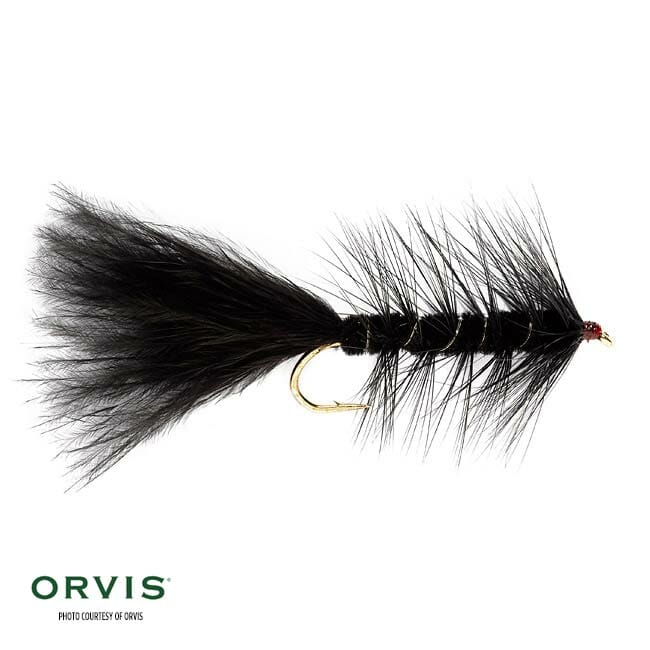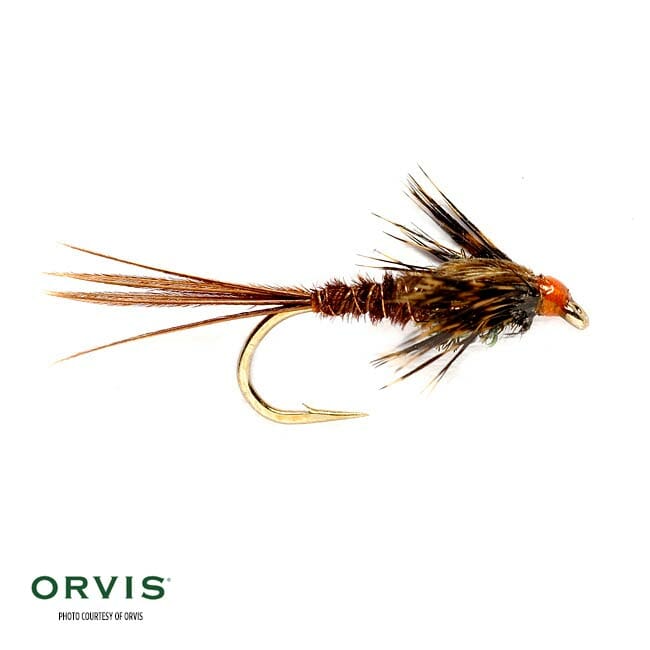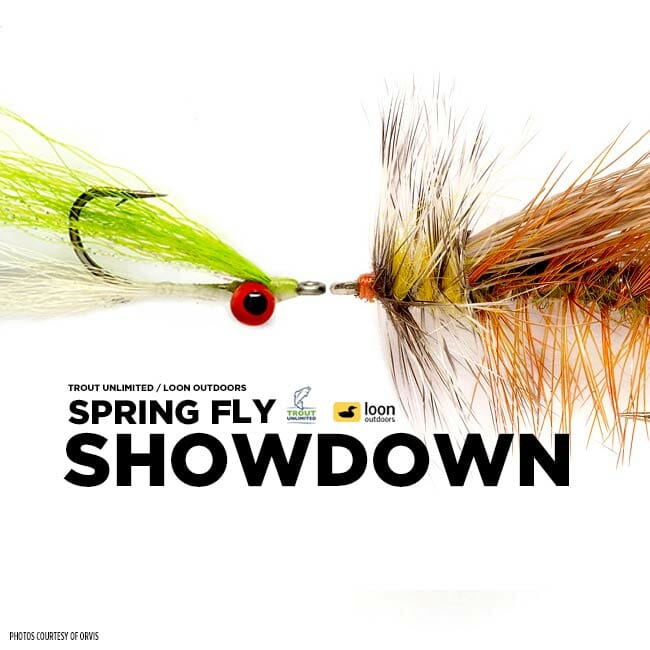Two great attractor patterns. Two proven fish-catchers. These two staple fly patterns are squaring off against one another in the round of eight for the right to go to the final four in the TU-Loon Outdoors Spring Fly Showdown.
The Woolly Bugger is perhaps the most versatile fly ever crafted. It’s roots are a little murky, although many believe it was first tied in Pennsylvania to represent a hellgrammite (a stonefly nymph) in the late 1960s. Honestly, it’s origins are unimportant. What makes the ‘Bugger such a great fly is its ability to mimic so many different food sources, depending on its density and its color.

For hard-core streamer anglers, the ‘Bugger is often tied with weight and bounced along the bottom, where it might be seen by trout as a leech, a crawfish or even a sculpin. For others, the ‘Bugger, tied in lighter colors, is a great baitfish imitation.
And, of course, it’s likely the easiest fly to tie, making it an excellent fly for beginners.
The Pheasant-tail Nymph is equally effective and is likely a more traditional choice for nymphing anglers. Using pheasant tail fibers both for the tail and for the wraps up the hook shank, this fly is one of the first patterns new tiers learn to tackle at the vise.

It’s also an excellent mayfly nymph attractor, and in larger sizes, it’s a reasonable representation of a stonefly. I love to tie and fish this pattern—it’s a winner here on my local waters in eastern Idaho, particularly in pre-run-off conditions on the Henry’s Fork and in the Big Wood River below Sun Valley.



